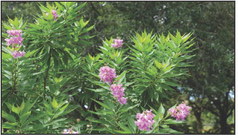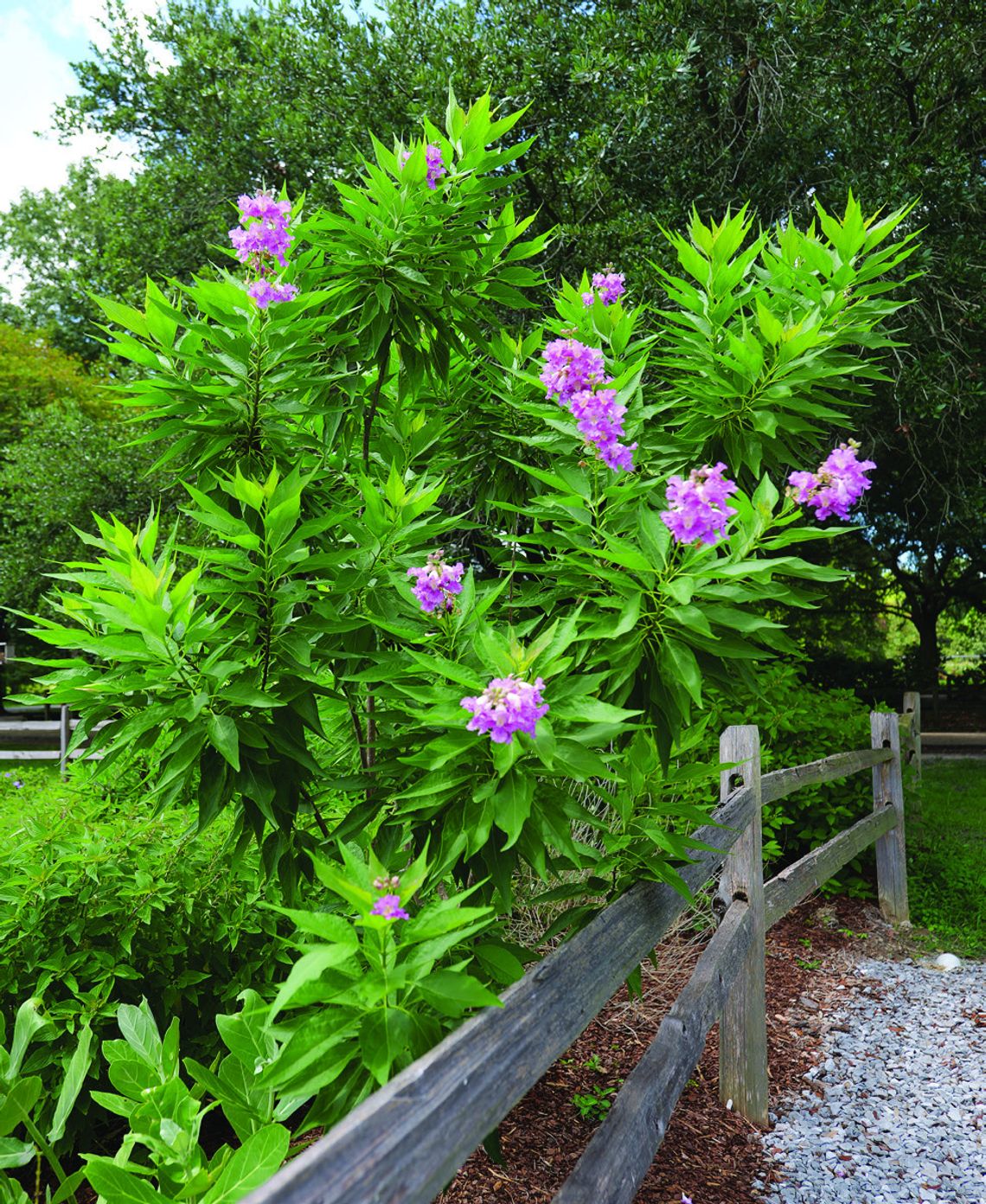Get it growing
New woody ornamentals don’t come along as often as annual bedding plants. So when El Niño desert orchid hit the market, LSU AgCenter horticulturist Jason Stagg was excited to see the flowering shrub’s potential for Louisiana gardens.
Something else about this new plant intrigued Stagg. El Niño is a hybrid of an unusual pair of native plants: catalpa, a tree we are familiar with here in Louisiana, and desert willow, a plant that’s common in Western states.
Why is this significant? “Creating a hybrid out of plants from two different genera is often very difficult,” Stagg said.
El Niño has been given the scientific name Chitalpa — a mashup of Chilopsis, the genus to which desert willow belongs, and Catalpa.
This plant from Proven Winners is more than just a breeding success, though. It’s a tough-as-nails, easycare shrub that bursts with frilly, pink-to-violet blooms in late spring and summer. At the Ag-Center Botanic Gardens at Burden in Baton Rouge, El Niño started flowering in May, and the blooms have kept coming ever since.
“They’re incredibly fragrant,” Stagg said. “They’re also drawing in a lot of pollinators, and that’s something we love to have in our garden.”
El Niño’s oppositearranged, pointed leaves have interesting visual qualities, too.
“They’re very architectural,” Stagg said. “It’s almost like the shrub was sculpted, and I think that creates a really neat shape in the garden.”
The El Niño at Burden has been in the ground for only a couple of years, and it has already reached about 10 feet tall. Stagg expects it to top out a little taller than that with a spread of 4 to 6 feet.
El Niño has the most flower power in full sun but can do just fine in partial sun. It is deciduous, meaning it will lose its leaves in the winter.
El Niño grows and establishes quickly and is low maintenance. It can handle droughts, heavy rain and everything in between. It even survived Louisiana’s record freezing temperatures this past winter.
It also appears to be deer resistant. Researchers have observed little deer damage in trials in North Carolina — where the plant was developed — as well as locally at Burden and the AgCenter Hammond Research Station.
Like most shrubs, El Niño should be planted in the cooler months. If you’re looking to add something unique to your garden, be sure to put it on your list of plants to try.
“This plant is one of the most interesting new introductions that we’ve seen in years,” Stagg said.

El Niño desert orchid is an ornamental shrub with pink-toviolet blooms in late spring and summer. (Olivia McClure/LSU AgCenter)


